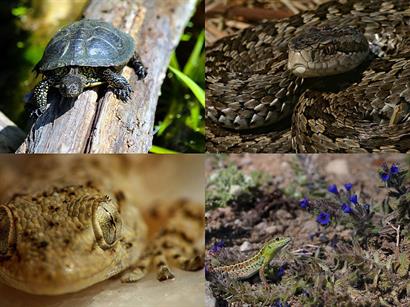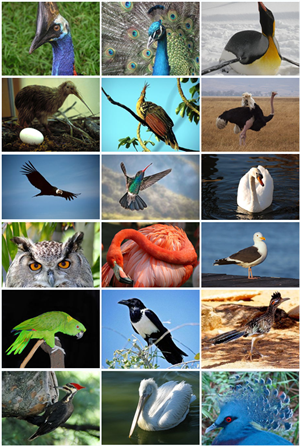PDF chapter test TRY NOW
Class Reptilia:
- These are animals that have dry scales on their bodies.
- They are cold-blooded animals that have lungs as their respiratory organs.
- They have pentadactyl limbs that are adapted for climbing, running, and padding.
- They are egg-laying (oviparous) animals that prefer sexual reproduction.
Example:
Turtles, Snakes, lizards and crocodiles. Hemidactylus frenatus is the scientific name of house wall lizard. Draco volans is the scientific name of flying lizard.

Class Reptilia
Class Aves (birds):
- These are warm-blooded animals.
- The birds have waterproof skin, which is covered with feathers.
- As they have flight adaptation, their bones are spongy with air cavities.
- They have powerful eyes, and their two forelimbs are modified for flight.
- They are oviparous and reproduce through sexual reproduction.
Example:
All the birds such as Ciconia ciconia (white stork), Aythya fuligula (male tufted duck), Struthio camelus (ostrich), pigeons, sparrows, and crows.

Class Aves
Class Mammalia:
- These are terrestrial warm-blooded animals.
- They have an external ear or pinna, a muscular diaphragm, non-nucleated RBC, heterodont and diphyodont dentition.
- They are viviparous as they give birth directly to the young ones.
Example:
Homo sapiens (Humans), cats, whales, dogs, monkeys.

Class Mammalia
Reference:
https://upload.wikimedia.org/wikipedia/commons/thumb/e/e5/European_reptiles_collage.jpg/1024px-European_reptiles_collage.jpg
https://upload.wikimedia.org/wikipedia/commons/d/d2/Bird_Diversity_2011.png
https://upload.wikimedia.org/wikipedia/commons/c/c3/Mammal_Diversity.png
